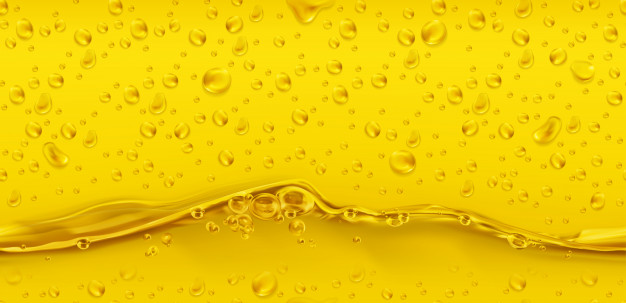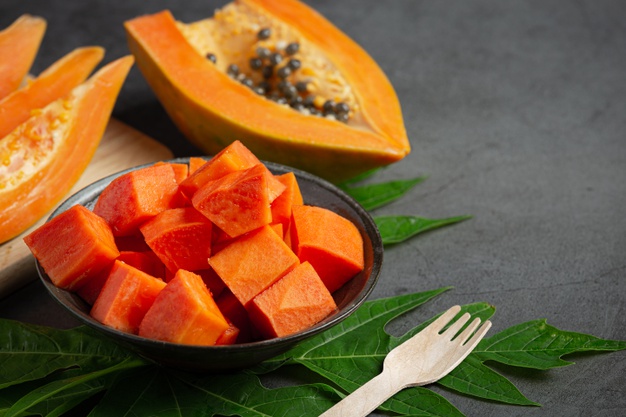Oil, which is extracted from fleshy palm fruit, is known as palm oil. It is semi solid in room temperature and offers numerous health benefits.
Characteristics
- This oil can be used as crude oil and its refined form can also be used
- In its crude form, it is orange in colour whereas refined palm oil is light yellow in colour
- Unrefined palm oil is termed as red palm oil
- Palm oil has a savory and earthy taste
- It is considered as the highest yielding oil crop
- It is extensively used by various food industries to prepare various food products and its adaptability and versatility to different food applications is considered as the result of its chemical composition
- It is widely used for preparing margarines, cooking oils and confectionary products
Preparation of palm oil
- The palm fruit should be washed properly for removing all dirt and impurities
- Then the fruits are subjected to extraction process
- The oil which is extracted by crushing the kernel of the palm fruit is known as palm kernel oil. Palm kernel is the nut that situated in the center of each fruit
- Whereas the oil which is obtained by squeezing the fleshy fruit is known as crude palm oil


Nutritional profile
- It contains significant amount of saturated fat as well as unsaturated fat but it does not contain any cholesterol
- It provides adequate amount of calorie on its oxidation
- It contains both monounsaturated fatty acid (MUFA) and polyunsaturated fatty acid (PUFA) but it contains comparatively higher amount of MUFA than PUFA
- It has estimated that palm oil contains about 50% of saturated fatty acid, 40% of monounsaturated fatty acid and 10% of polyunsaturated fatty acid
- Its unsaturated fatty acid contents show numerous nutraceutical activities
- It also contains fat soluble vitamins and significantly rich in Vitamin E
Types
- There are two types of palm oil produced, which include, palm kernel oil and crude palm oil
- Both of the oils have potential health benefits
Health benefits
Antioxidant activity
- It exerts potent antioxidant activity that helps to reduce the risk of developing chronic diseases as it is related with inhibiting oxidative stress
- It helps to decrease the concentration of free radicals and ROS in body that help to protect the body from oxidative damages
- It also prevents lipid peroxidation
- It helps to prevent cellular damages as well thus improves their functionality

Role on nervous system
- Palm oil is significantly rich in Vitamin E, which plays imperative role in improving brain health
- It also helps to enhance brain functionality
- It plays significant role in protecting the brain tissues from free radical induced oxidative damages thus helps to decrease the susceptibility of developing neurological disorders
- It is also associated with halting the progression of brain lesions
- It has seen that its consumption is extremely beneficial for improving the symptoms of dementia
- It helps to improve cognition as well
Role on Vitamin absorption
- It plays imperative role in enhancing Vitamin A absorption
- It is packed with beta-carotene that is converted into vitamin A later in body thus its consumption is very effective for improving Vitamin A status in body
- As it is related with improving Vitamin A status thus its consumption is considered as extremely helpful for promoting vision
- It has seen that consumption of red palm oil during gestational period significantly improves vitamin A level in mother as well as in baby
- Individuals who suffer from Vitamin A deficiency should include palm oil in their diet for preventing respective deficiency disorders

Role on cardiac health
- It helps to promote cardiac health as well as cardiac functionality
- It has seen that cholesterol in excess amount can build up within artery thus makes the artery harder and narrower, which ultimately force the heart to work hard for pumping out blood throughout the body that creates additional burden to heart and gradually hinders cardiac function. As it is related with decreasing cholesterol level thus helps to slow down the progression of cardiac disorders
- It also helps to protect the heart from oxidative damages thus decreases the prevalence of cardio vascular diseases

Role on regulating cholesterol level
- There is a controversy between palm oil and cholesterol level. Some studies have shown that palm oil helps to decrease cholesterol level where some studies have shown that it may increase blood cholesterol level
- As it contains adequate amount of saturated fat thus its consumption may increase the risk of developing fat percentage in body. On a contrary its unsaturated fatty acid content especially monounsaturated fatty acid content aids in reducing fat percentage especially the percentage of LDL in body
- It is better to use palm oil in the place of butter
- Palm oil should not be added on the top of other types of oils due to its saturated fatty acid content

Role on skin
- It Vitamin E component plays significant role in promoting skin health
- It helps to prevent the appearance of scars and significantly improves the symptoms of acne
- It helps to prevent ageing as well
- It is also associated with preventing atopic dermatitis
- Its antioxidant activity is accountable for protecting the skin from oxidative damages that ultimately helps to decrease the susceptibility of developing skin diseases
- It is very effective for treating psoriasis
- It has seen that its utilization is extremely helpful for treating skin wounds
Role on hair
- Its Vitamin E content is considered as the main constituent that helps to promote hair growth
- It helps to improve hair strength as well
- It also helps to prevent hair falls
Other health benefits
- It helps to prevent cystic fibrosis
- It plays significant role in treating the symptoms of cyanide poisoning
- Its antioxidant activity is responsible for decreasing the susceptibility of cancers. It has seen that palm oil is related with protecting the body from the harmful effects of carcinogens
General consideration of using palm oil
- It can be used as cooking oil
- Its high smoking point makes it an ideal frying oil thus it can be used for preparing various fried items
- It is better to use fresh palm oil as it contains significant amount of tocotrienol and exerts various health benefits whereas using of reheated palm oil is not a healthy choice as reheated palm oil has comparatively fewer benefits than fresh palm oil and it may also increase the risk of developing heart diseases
- Children below 5 years can consume 6g of palm oil per day whereas children above 5 years of age and adults can consume 9g of palm oil daily

Risk factors
Consumption of palm oil in the amount found in food is considered as absolutely safe for humans or its consumption as per recommendation is also considered as safe but it’s over consumption is not wise because it can cause various health hazards. As it is high in saturated fatty acid thus it’s over consumption may cause hyperlipidemia, cardiovascular diseases and obesity.

Source:
Absalome, M.A., Massara, C.C., Alexandre, A.A., Gervais, K.O.F.F.I., Chantal, G.G.A., Ferdinand, D.J.O.H.A.N., Rhedoor, A.J., Coulibaly, I.K.L.O., George, T.I.A.H.O.U.G., Brigitte, T.H.O.M.A.S.S.E.T. and Marion, M.O.R.E.N.A., 2020. Biochemical properties, nutritional values, health benefits and sustanaibility of palm oil. Biochimie.
Imoisi, O.B., Ilori, G.E., Agho, I. and Ekhator, J.O., 2015. Palm oil, its nutritional and health implications. Journal of Applied Sciences and Environmental Management, 19(1), pp.127-133.
May, C.Y. and Nesaretnam, K., 2014. Research advancements in palm oil nutrition. European journal of lipid science and technology, 116(10), pp.1301-1315.
Mukherjee, S. and Mitra, A., 2009. Health effects of palm oil. Journal of human Ecology, 26(3), pp.197-203.
Odia, O.J., Ofori, S. and Maduka, O., 2015. Palm oil and the heart: a review. World journal of cardiology, 7(3), p.144.
Shimizu, H. and Desrochers, P., 2012. The health, environmental and economic benefits of palm oil. IEM’s Economic Note, pp.1-4.









